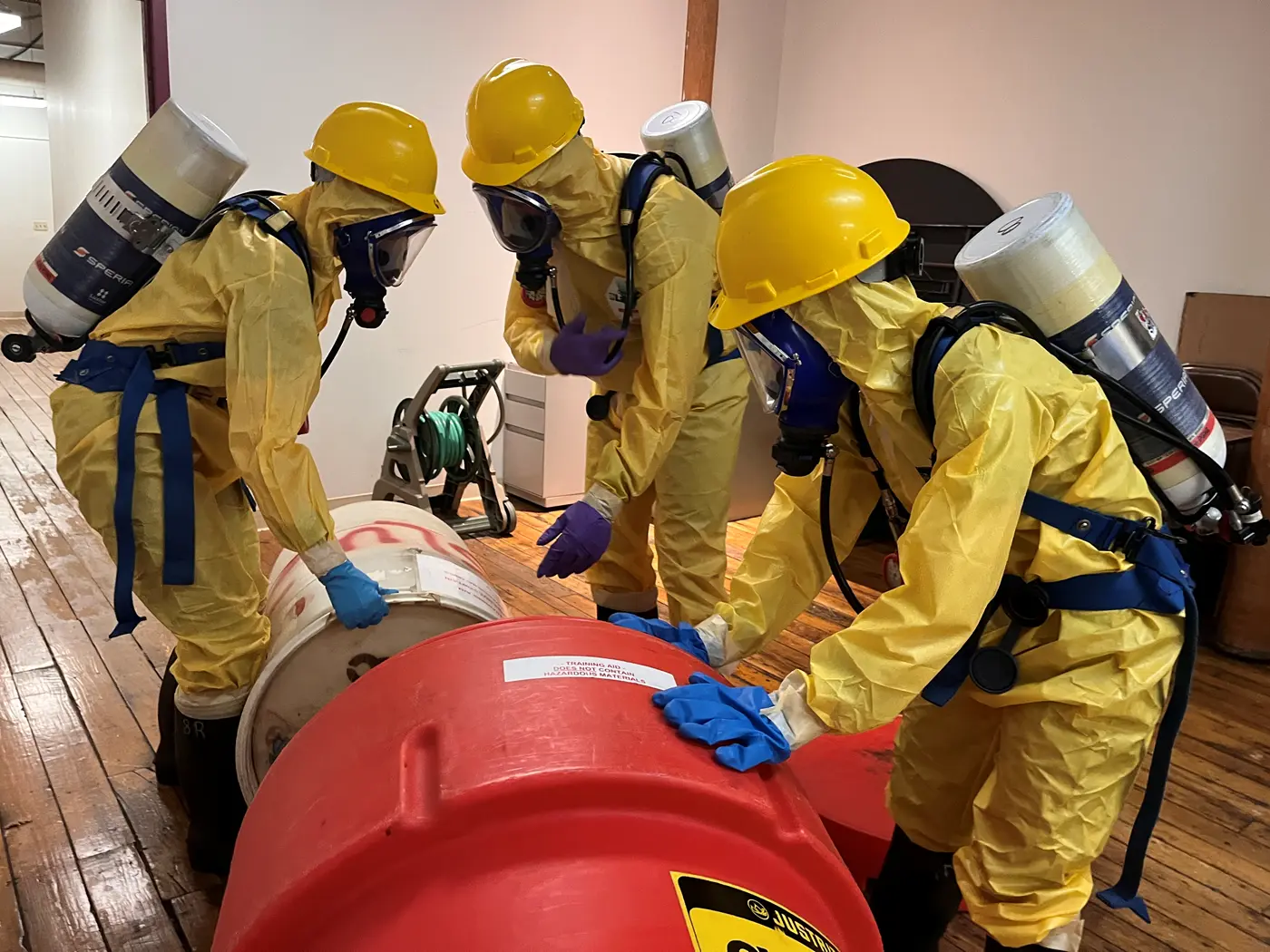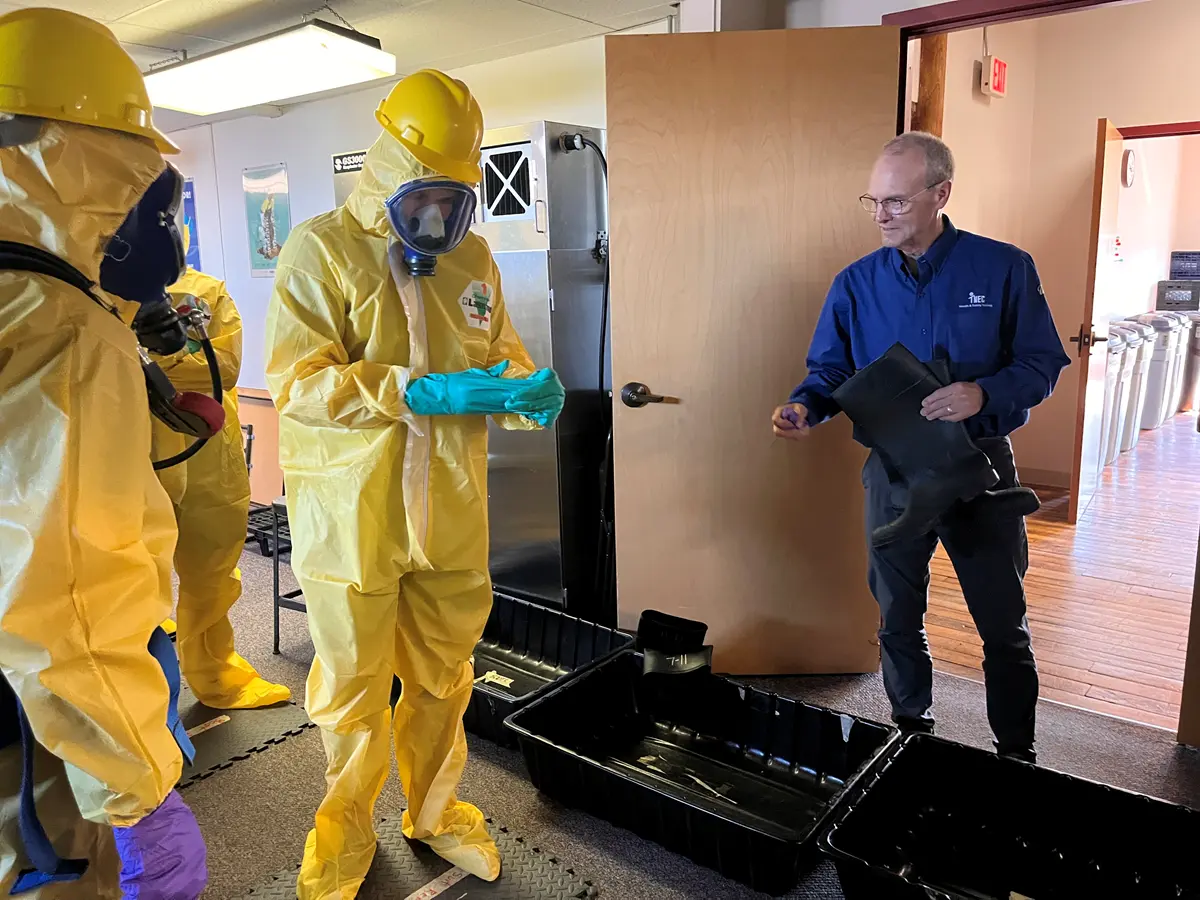
Wearing yellow hazmat suits with respirators, students in the Hazardous Waste Operations and Emergency Response course responded to a scenario in which 20 old, leaking chemical drums were discovered in an old factory.
What started as hazardous materials training 35 years ago has grown into an expansive hands-on education program that helps hundreds of thousands of workers across New England stay safe on the job.
This proven track record helped The New England Consortium (TNEC) at UMass Lowell recently secure a five-year, $7.3 million grant from the federal National Institute of Environmental Sciences (NIEHS).
“This funding allows us to build the safety skills of workers who respond to emergencies and disasters and thereby protect people living in nearby neighborhoods and communities,” says David Turcotte, a research professor in the Department of Economics who leads a team of seven full-time TNEC employees, all members of UML’s Department of Public Health. “Whether it’s handling hazardous materials, responding to disasters or preventing the spread of infectious diseases, these trainings provide the tools necessary to support health and safety.”
Over the years, TNEC has expanded its training to workers exposed to hazards such as natural disasters, toxic chemicals, mold due to flooding and infectious diseases like COVID-19.
With this new round of funding, TNEC expects to train more than 5,425 workers annually from across New England and New York in building trades, sanitation, maintenance, health care, higher education and school districts. TNEC partners with New York’s Civil Service Employees Association, as well as the coalitions for occupational safety and health of Massachusetts, Rhode Island, Connecticut and New Hampshire to carry out the trainings.
TNEC will receive approximately $1.4 million annually from the NIEHS award, with $1.2 million earmarked for hazardous waste worker training and approximately $200,000 for disaster preparedness training.

TNEC Trainer Tom Estabrook advises students as they arrive in the decontamination section of the simulation.
Dennis van Maaren ’24, ’25, who earned bachelor’s and master’s degrees in environmental science, geoscience option, is interested in working on hazardous waste site cleanup and monitoring.
“I thought the class was excellent, with both instructors and students having a wide variety of backgrounds and information. There was a good mix of lecturing, group activities and hands-on work,” says van Maaren, who currently works as a part-time laboratory assistant at UML.
On the final day of the HAZWOPER training, Tom Estabrook, the project director and a trainer, reinforced lessons learned with a hands-on simulation. Wearing yellow hazmat suits with respirators, the students had to decide how to handle a scenario in which 20 old, leaking chemical drums were discovered in an old factory. The nine students split into three groups to assess and control the hazardous materials, decontaminate the area and run the command center.
The students demonstrated proper procedures for handling, storing, transporting, treating and disposing of hazardous materials.
“Students really learn by doing, which is why we make the situation as realistic as possible,” says Estabrook, who has been teaching TNEC courses for 29 years. “Our goal is to get students to think critically in the moment and respond under pressure to protect themselves and others.”
